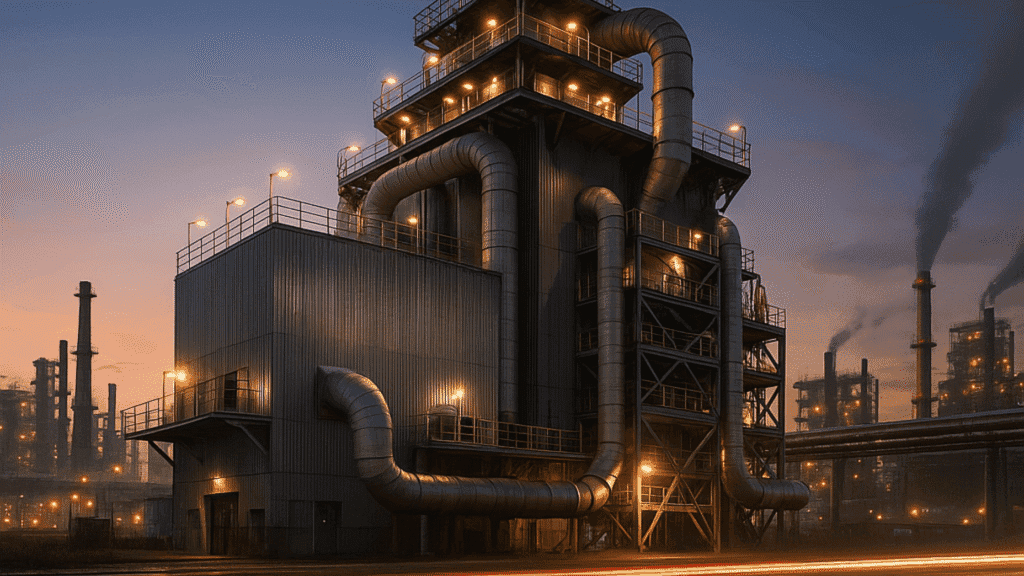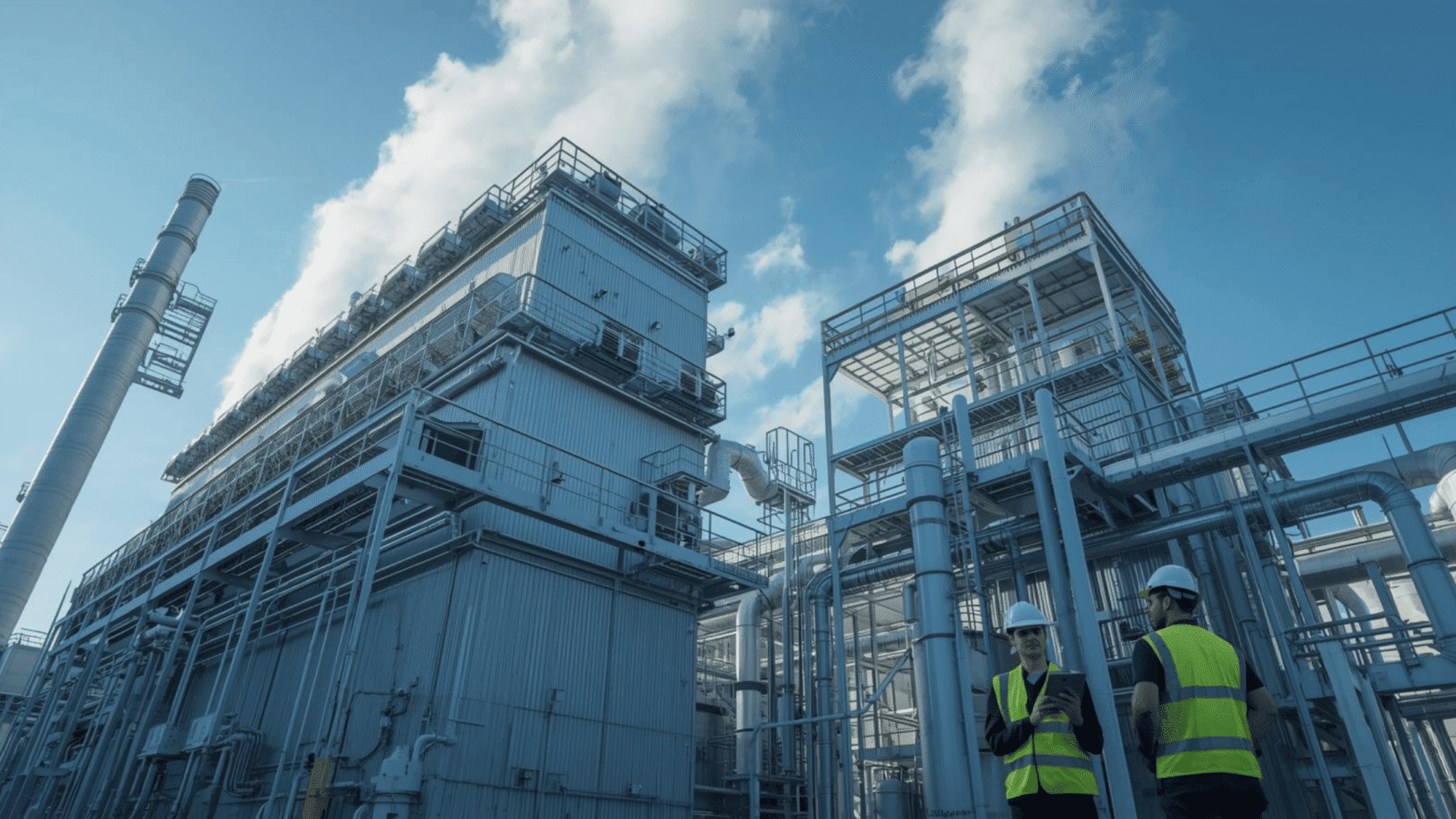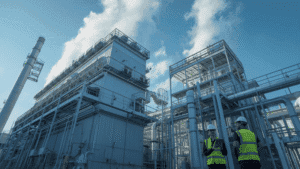In modern industrial operations, managing dust, ash, and fine particulate matter is not just about regulatory compliance—it directly impacts operational efficiency, equipment lifespan, and workplace safety. Industries such as power generation, cement production, steel manufacturing, chemical processing, and waste-to-energy plants face the dual challenge of meeting stringent emission standards while controlling operational costs.
Electrostatic Precipitators (ESPs) have emerged as a cornerstone technology for industrial emission control. By using electrostatic forces to remove fine particles from exhaust gases, ESPs provide reliable, high-efficiency performance that mechanical filters or cyclones often cannot achieve. As leading Electrostatic Precipitators manufacturers, Intensiv Filter Himenviro delivers state-of-the-art ESP solutions tailored to industrial needs.
Біздің шешімдер ауқымын ашыңыз:
How Electrostatic Precipitators Work
An ESP functions on the principle of electrostatic attraction. Dust-laden gases enter a chamber where high-voltage discharge electrodes create a corona effect, charging particles as they pass through. These charged particles migrate to oppositely charged collection plates, adhering to the surface. Periodically, the plates are vibrated or “rapped,” causing accumulated dust to fall into hoppers for disposal or recycling.
This process enables ESPs to capture particles as small as 0.01 microns, achieving collection efficiencies exceeding 99.9%, even in high-volume gas streams. Unlike fabric filters, ESPs maintain low pressure drops—typically between 0.09 and 0.38 inches of water column—which reduces energy consumption and operational costs. Modern ESPs consume around 100 watts per 1,000 CFM of gas flow, making them one of the most energy-efficient particulate control systems available.
Электростатикалық сүзгілердің түрлері
Electrostatic Precipitators are designed to suit different industrial requirements. Dry ESPs are commonly used in high-dust, low-moisture applications such as coal-fired power plants, cement kilns, and steel furnaces. Wet ESPs, on the other hand, are ideal for handling sticky or corrosive particulates and often incorporate water or liquid rinses to clean the collector plates. Hybrid ESPs combine these methods, offering flexibility for highly variable gas streams or challenging particulates.
Industrial Applications
ESPs are critical across industries where particulate emissions can affect both compliance and operational efficiency. In power generation, they effectively capture fly ash from coal and biomass-fired plants, preventing downstream equipment wear. Cement factories rely on ESPs to manage kiln dust and clinker cooler emissions, protecting both the environment and production efficiency. Steel and metallurgical operations utilize ESPs to control furnace and converter dust, while chemical and petrochemical plants depend on them for handling corrosive, fine, or sticky particulates. Waste-to-energy and incineration plants benefit from ESPs by ensuring clean flue gas, minimizing toxic emissions, and recovering valuable ash for recycling.
Technological Advantages
Modern ESPs are no longer passive filtration systems—they are intelligent, adaptive, and energy-efficient. Smart monitoring systems track voltage, current, and particulate load in real time, allowing predictive maintenance that prevents unplanned downtime. AI-driven analytics dynamically adjust voltage and rapping frequency to optimize particle capture while minimizing energy use. Hybrid wet-dry ESP designs enable industries to handle corrosive, sticky, or high-moisture particulates that traditional ESPs struggle with. Advanced materials for electrodes and collection plates ensure durability in high-temperature and abrasive environments, extending service life to decades.
By combining these features, ESPs offer industrialists a system that not only meets regulatory requirements but also reduces operational costs and improves overall plant efficiency.
Why Choose Intensiv Filter Himenviro

As one of the leading Electrostatic Precipitators manufacturers, Intensiv Filter Himenviro delivers customized ESP solutions for diverse industrial needs. Every system is designed based on the dust type, gas composition, temperature, and operational requirements of the facility. From initial audits and process analysis to installation, maintenance, and spare parts support, our end-to-end services ensure optimal performance and reliability.
Our hybrid designs, smart monitoring, and energy-efficient configurations make ESPs a sustainable choice, helping industries comply with evolving emission standards while improving operational efficiency. With decades of experience and German-engineered precision combined with local expertise, we provide ESPs that withstand harsh industrial conditions and deliver long-term value.
Қорытынды
For industrialists, an Electrostatic Precipitator is more than a dust collector—it is a strategic investment in compliance, operational efficiency, and sustainability. By choosing a trusted Electrostatic Precipitators manufacturer like Intensiv Filter Himenviro, industries gain access to advanced, reliable, and energy-efficient systems capable of handling modern industrial challenges.
Upgrade your emission control strategy with a precision-engineered ESP that ensures long-term operational excellence, environmental compliance, and cost-effective performance. With Intensiv Filter Himenviro, your plant is equipped not just to meet today’s emission standards, but to exceed them.
Жиі қойылатын сұрақтар
Electrostatic Precipitators are widely used in cement plants, steel and metal industries, power generation units (coal, thermal, biomass), pulp & paper mills, chemical manufacturing, and waste-to-energy plants. These industries rely on ESPs to meet stringent emission norms while maintaining production efficiency.
- Dry ESPs collect dust and particulate matter in a dry form, ideal for handling fly ash, cement dust, and furnace emissions.
- Wet ESPs use water to remove fine particulates, acid mists, and sticky aerosols, making them effective in industries like chemical, petrochemical, and waste incineration where gas streams are saturated.
Modern ESPs can achieve 99% to 99.9% collection efficiency, depending on particle size, resistivity, and system design. With advanced high-frequency power supplies and optimized electrode configurations, manufacturers like Intensiv-Filter Himenviro ensure superior dust collection performance and compliance with global emission standards.







